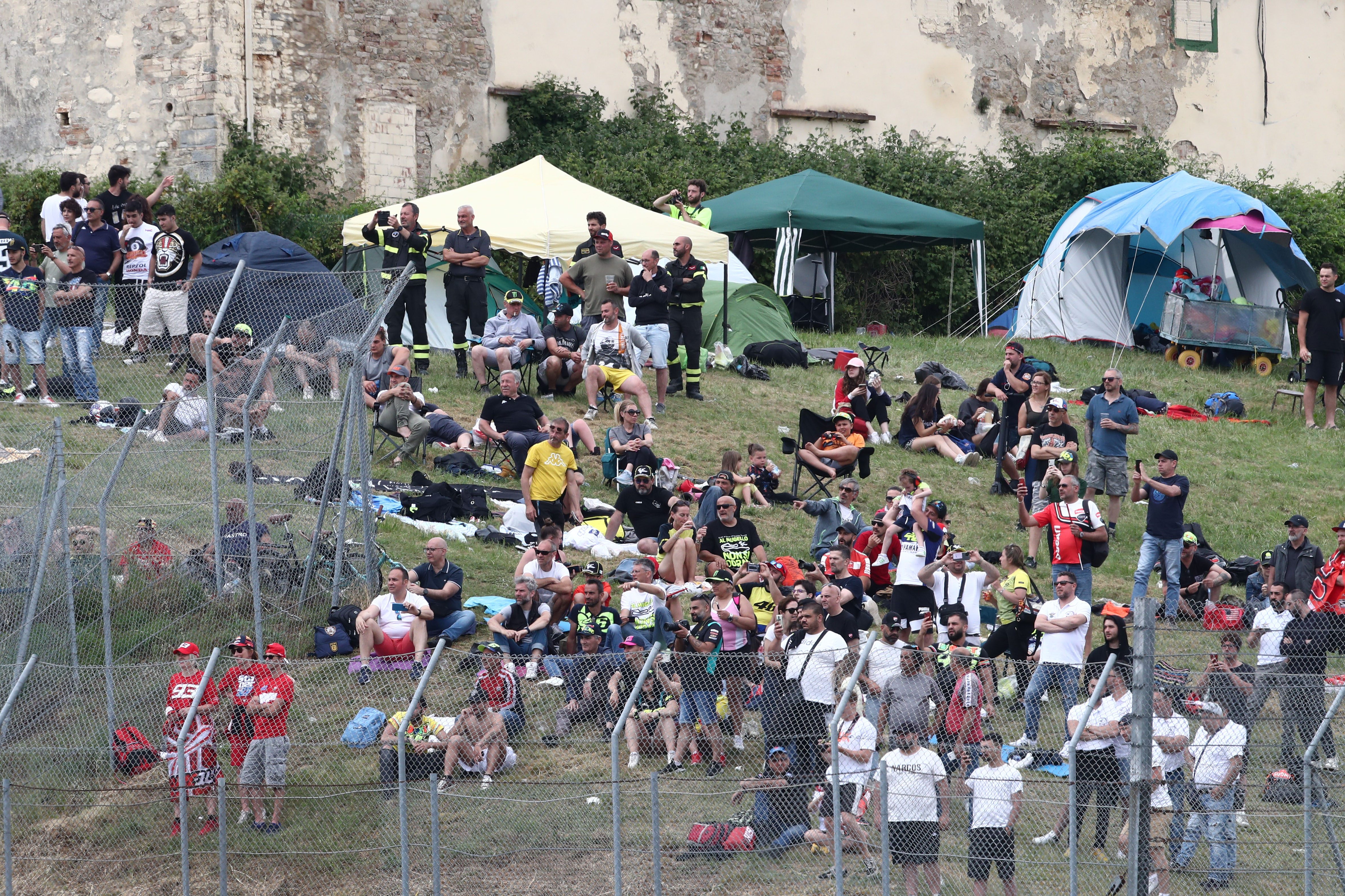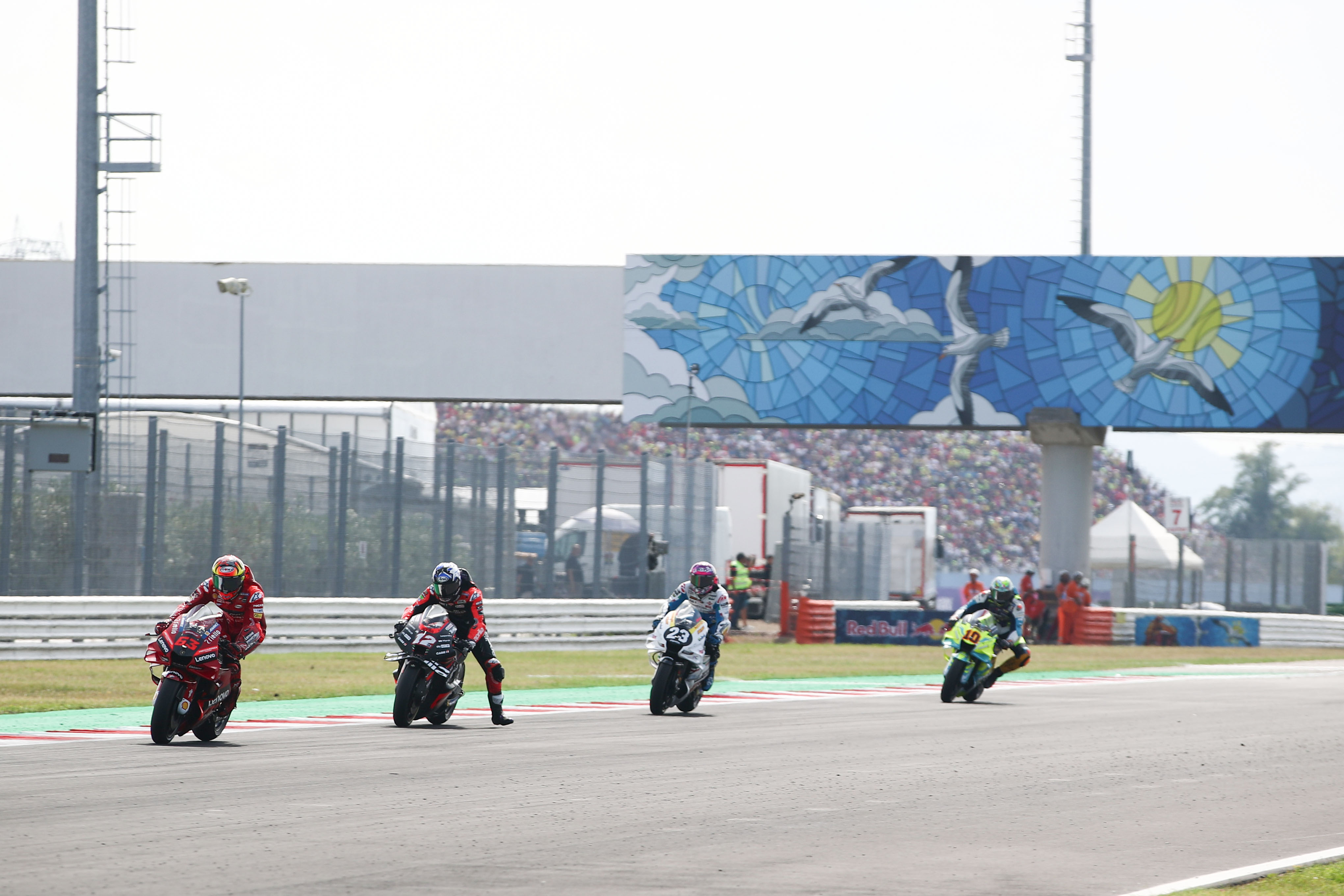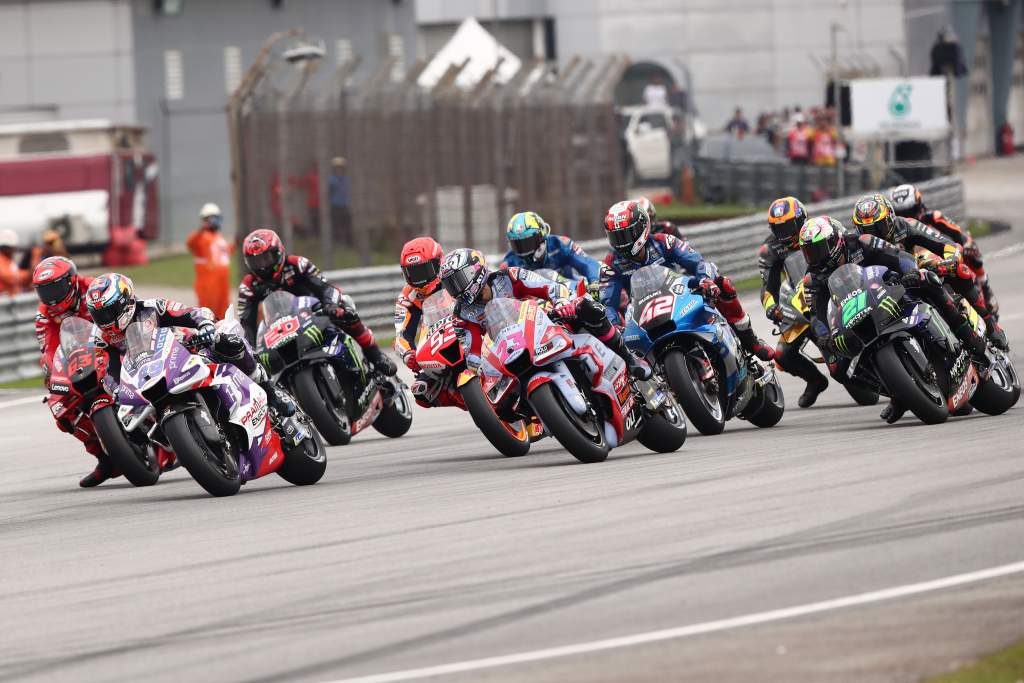MotoGP will be very different in one major aspect in 2023 as it switches to a two-race weekend format for the first time ever with the introduction of sprint races at every single grand prix.
It’s a divisive decision, but it’s been made to try to solve the very real problem of falling viewer numbers.
Given that, to really make proper use of this format change MotoGP needs to go above and beyond. It needs to make the new half-distance races free to watch.
Adding another race to the schedule at each round is perhaps not a surprising idea, and though it’s something of a sticking plaster on a bullet wound it does have the potential to reverse the major viewership issue promoter Dorna is facing, if it’s used correctly.

It’s no secret that MotoGP is hurtling towards a crisis. Crowd attendance figures at some of the series’ most storied tracks in 2022 were under half what they used to be. Spectator numbers plummeted on both race day and across the weekend at the likes of Mugello, Silverstone and Misano.
TV audience figures are in the same trouble, with traditional pay to view channels shedding subscribers at an alarming rate and no new fans coming along to replace them.
MotoGP’s British Grand Prix, for example (which did air on free to watch ITV but with little promotion beforehand), had tens of thousands fewer viewers than the previous weekend’s British Superbike round.
Sprint races will hopefully fix some of those woes by giving more value to those considering attending the races. Two premier class races instead of one, a Saturday line-up that – with qualifying in the morning too – should be a spectacular day of viewing, and Sunday still having the main event adds up to a far more interesting proposition for fans at the track.
But here’s the thing about getting people to attend races: no one is going to fork out hundreds of pounds to come along and watch unless they’re already a fan. And the real issue that MotoGP is facing right now, bigger than anything else, is turning uninterested people into new fans.
That’s where the sprint races come in. They’re currently an added bonus to any TV contracts that Dorna has signed. It shouldn’t be that difficult to persuade broadcasters that it’s in their own best interests to give up a small slice of the pie in return for what could be a very welcome boost to their own audiences in the medium to long term. Sure, corporate greed is a powerful force, but you’d like to think that any business savvy executive could see the writing on the wall at the minute.
With rights re-secured (not region but region, but wholesale across the globe), Dorna should then give away the sprint races on every single platform it can reach. We’re not talking on its own site, locked behind a ‘you must register to continue’ box, or even on traditional streaming platforms like YouTube or Facebook.
Instead, commit fully to going after the sort of new, young fans that Formula 1 has so successfully lured in with its groundbreaking Netflix documentary Drive to Survive. Broadcast the sprints on Twitch, TikTok, Instagram. Allow streamers to host their own feeds, capitalising on a massive audience that’s already there.
Of course, it is a strategy that could backfire – one that has two potential pitfalls.
Firstly, there’s the risk of Saturday’s races becoming infected with the decay that has already impacted Sunday’s main event in recent seasons: boring racing.

With the rise of ride height devices and aerodynamics while tyre development has remained stagnant, we’ve seen overloaded tyre pressure and a wariness to risk over stressing the front end of the bike turn what was once the greatest spectacle in racing into something considerably more processional. Only banning front ride-height devices isn’t going to solve that for 2023 either.
Poor racing is an issue that won’t be addressed by sprint races alone. If we end up with not one but two boring races a weekend, no one is a winner.
Alternatively, the second dilemma only comes into play if Saturday’s shorter races, where riders don’t have to care about tyre consumption or front temperature or fuel efficiency the same way they do on Sunday, turn out to be the frenetic and crazy racing that many expect they will be. Then will the sprints be enough to give people (with shorter attention spans than ever) their fix of racing for the weekend and end up detracting from the – potentially less exciting – grands prix?
Only time will tell with both problems – but by then it might be too little too late if viewer numbers continue to fall.
Right now, there’s a golden opportunity on the table to win over some brand new fans, ones not opposed to sprint races for whatever reason. It’s too good a chance not to take.





